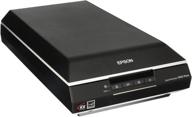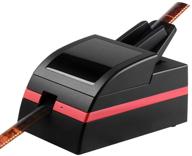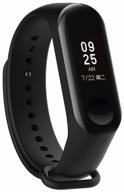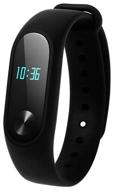
Review on Plustek OpticFilm 8200i SE Film and Slide Scanner | 7200 DPI, 48-bit Output | Infrared Dust and Scratch Removal | Silverfast SE Plus 8.8 Bundle | Mac and PC Support by Michael Lucas

Great solution for the money but scanning is a bit slow.
I have made several hundred slides and negatives with this machine and the scan quality and ease of use are amazing. The SilverFast software is a nice bonus but requires simpler documentation to use. First, you don't need to use most of these features if you have photo editing software that you like better, like Photoshop. The editing you can do after scanning (after scanning) should probably be done in some other software. Just use SilverFast, to get a quality scan and do everything else somewhere else, IMO of course. 1 - Set the desired scan sizes, name (SilverFast will automatically increment the name, it will not overwrite it), ppi, etc. The format is a little strange as it sometimes seems like it will deliver less resolution at a larger size, but it actually isn't. I suggest starting with 3600ppi unless you are sure you need a higher or lower resolution. Of course the speed changes a lot when ppi changes. Here you can also select the file format. I'd love to see PNG format, but the JPEG quality options make it look better than usual. Other options (TIFF, etc.) produce very large files, which is fine for multiple scans, otherwise there would be too much data. 2 - Set the correct transparency/negativity options for what you are scanning. I would suggest setting the frame to full screen. You can crop later.3 - Enable iSRD and SRDx, but disable 1:1 (exact preview). If you want to check SRDx settings, you can enable 1:1 after prescan or leave 1:1 enabled if you really want to adjust SRDx settings per scan. But usually good settings can be found for all scans (I set detection to 1 and fragment size to 3) and save this step. Also, "Bright Flaws" is usually set for negatives, while "Dark Flaws" is usually set for slides. If you can eliminate 90% of the errors, without damaging the picture, you should consider it close enough. I leave iSRD set to Automatic and in most cases it works fine. A NOTICE. iSRD cannot be used for black and white negatives otherwise crazy things can happen. center position in the scanner, click on "Prescan" at the top and wait until the preview image appears (approx. 30 seconds). If this part takes longer than 30 seconds, the magnifier is probably set to 100%, which is useful for some things but usually not necessary. for prescan. Click the magnifying glass to switch to full screen mode or turn off 1:1 display on SRDx or iSRD.6 - Image settings and NegaFix can be useful, but *only* in cases in which a part of the image or the area illuminated is too bright or too dark. In these cases, you can adjust midtones, contrast, exposure, and tolerance. This usually cannot be fixed later, so you must do this before the scan. In general, SilverFast handles auto-brightness well, and I've only used these other options on a few occasions. 7 - Click on the "Scan" button to perform the final scan. When using the iSRD and SRDx functions, the scan takes about 3 minutes. Otherwise, it only takes 30 seconds, but the results will almost always be worse. This may seem like a lot, but once you get started you'll find that very few settings need to be changed. It's mostly just a prescan button, a scan button, and sometimes iSRD and SRDx buttons for dust/scratch detection. The results were really impressive on both slides and negatives. Note. There's also a multiple exposure button that can be toggled on or off. The idea is that it does a second scan (which adds up the total scan time) to get some detail that might be lost on a darker background. However, I hardly noticed the effect, at least from what I'm scanning. YMMV.UPDATE REGARDING HDR: SilverFast includes the ability to do things like HDR or High Dynamic Range. The idea is that multiple scans are required in different ways (multiple passes with different levels of brightness, hard to explain), to get all available light information and save it in a file. SilverFast calls it HDR RAW or HDRi RAW. An example would be a dark stage with a spotlight. Without HDR it just wouldn't be possible to show all the detail in the spotlight as well as the detail in the dark. If scan time and disk space aren't a concern, this will get the most information from a 500MB per file scan. Not exactly sure about the benefits or differences between HDR and HDRi or why having them both, maybe to save time/file size. If you go the HDR route, I would suggest 64-bit HDRi for color and 32-bit HDRi for black and white, which is the maximum. After that you will have a file with all the information that this scanner can capture. The RAW TIFF files can then be brought into Photoshop and with the HDR toning feature you can literally extract detail from light and dark areas, it's really amazing. file size and scan time) is that iSRD and SRDx features are disabled. This means you get all available information from the scan, including scratches and imperfections. They need to be cleaned up manually after scanning, which isn't that difficult with Photoshop's repair tool. So if the original is in good condition or has difficult lighting conditions and time/file size is not an issue, use HDRi. . If the original is badly damaged or you don't want to spend so much time scanning/cleaning afterwards, follow the 7 steps above. They need to be cleaned up manually after scanning, which isn't that difficult with Photoshop's repair tool. So if the original is in good condition or has difficult lighting conditions and time/file size is not an issue, use HDRi. . If the original is badly damaged or you don't want to spend so much time scanning/cleaning afterwards, follow the 7 steps above. They need to be cleaned up manually after scanning, which isn't that difficult with Photoshop's repair tool. So if the original is in good condition or has difficult lighting conditions and time/file size is not an issue, use HDRi. . If the original is badly damaged or you don't want to spend so much time on scanning/cleaning afterwards,
- Supports Windows 7/8/10 and Mac OS 10.7.x ~ 10.14.x (Mojave), the driver can be downloaded from Plustek website.
- alt
New products
Comments (0)
Top products in 🖨️ Photo Printers & Photo Scanners

Canon Wireless Compact AirPrint Printing

11 Review

Experience Ultimate Color Accuracy with Epson Perfection V600 Colour Flatbed Scanner

15 Review

Pacific Image PowerFilm CCD Scanner: Fast 📷 and Automated 35mm Film Scanning at 6MP Speed!

11 Review

Black Canon Selphy CP1300 Wireless Compact Photo Printer: AirPrint and Mopria Device Printing

16 Review





